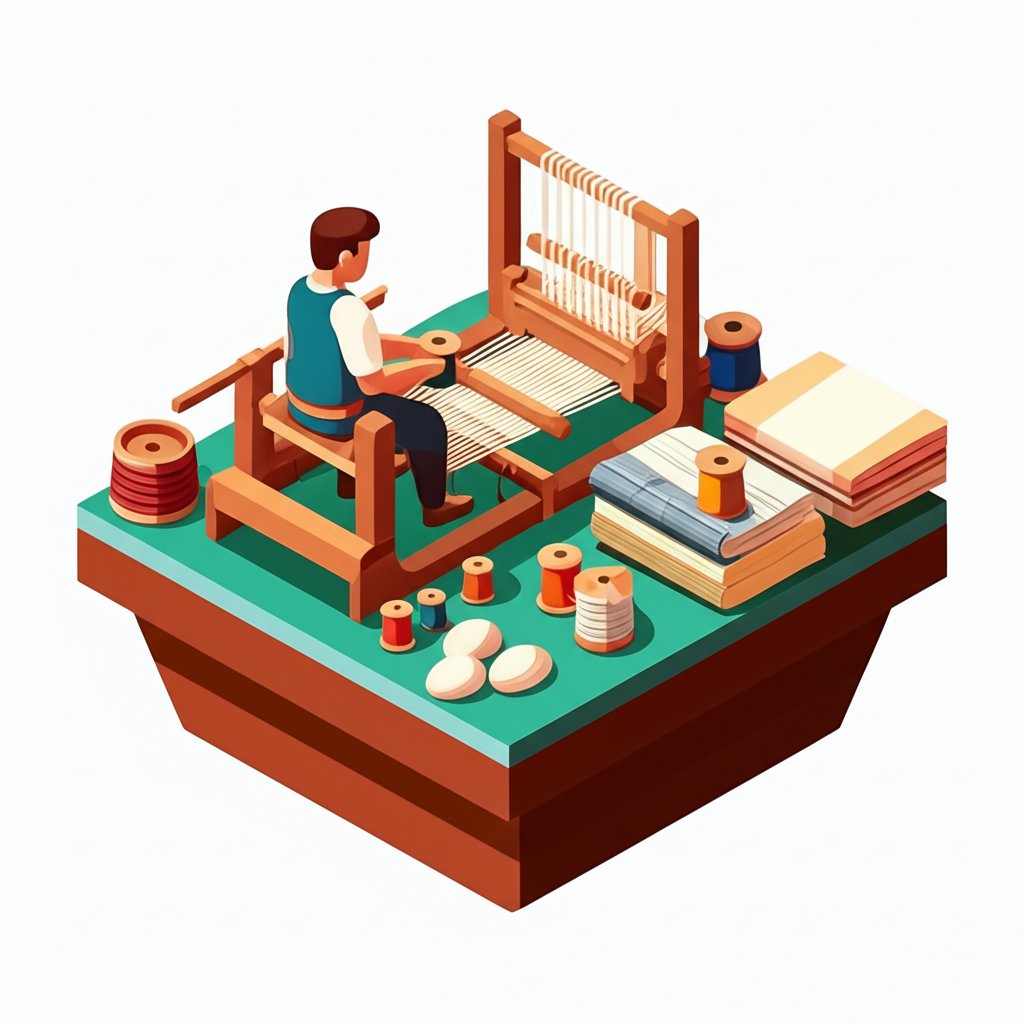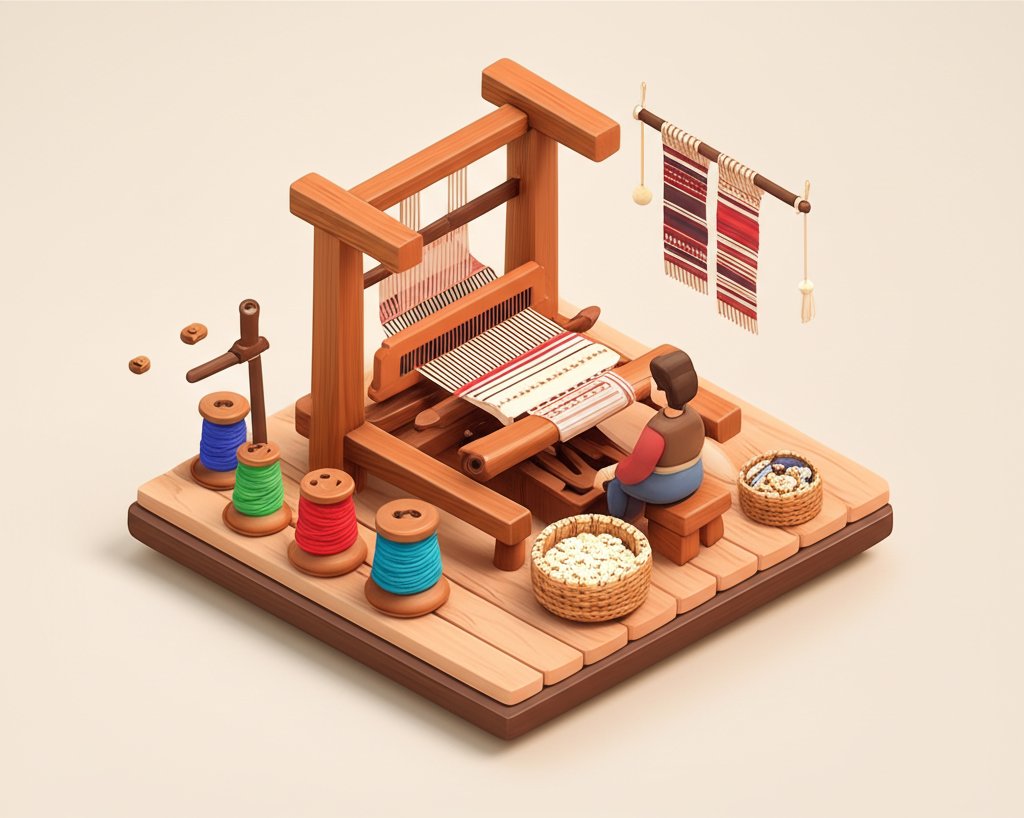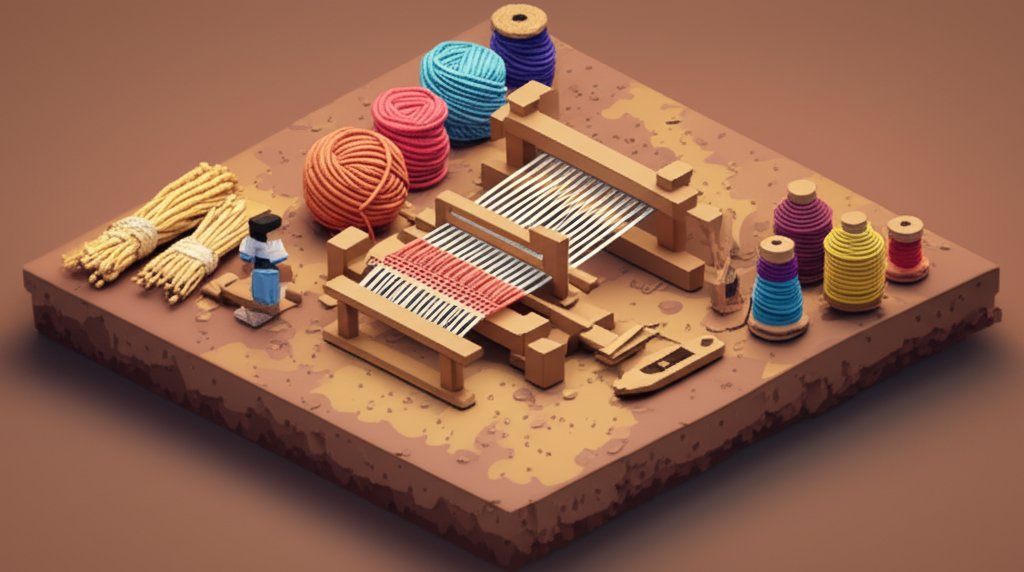The story of human civilization is intricately woven with the fibers of our ingenuity. From the earliest protective coverings to the most elaborate tapestries, textiles have been fundamental to human progress. At the heart of this textile revolution lies the weaving loom – a device that transformed simple threads into complex fabrics, shaping cultures, economies, and societies. This article embarks on an unparalleled journey through weaving loom history, exploring the fascinating evolution of ancient looms, uncovering the timeline of loom invention, definitively answering when was the weaving loom invented, and clarifying the complex question of who invented the weaving loom. Prepare to unravel the rich, multi-threaded narrative of one of humanity’s most transformative technologies.
The Dawn of Textiles: When Was the Weaving Loom Invented?

Pinpointing the exact moment of the loom invention is akin to finding the singular drop that started a river. It wasn’t a sudden flash of genius but a gradual evolution, propelled by human necessity and escalating sophistication. The earliest forms of textile production predate what we recognize as a “loom” by tens of thousands of years.
Understanding the evolution of the loom offers valuable context to appreciate the broader history of clothing creation and dressmaking, and as discussed in more detail, informs much of the modern fashion industry that continues to evolve, as seen in the history of dressmaking.
Pre-Loom Weaving: Early Evidence and Techniques
Before the advent of dedicated weaving devices, early humans were already skilled in manipulating natural fibers. Evidence of pre-loom textile techniques like basketry, plaiting, and knotting dates back to the Upper Paleolithic era. These methods, using pliable plant materials, reeds, or animal hairs, demonstrate an innate understanding of interlacing strands to create durable structures. This foundational knowledge was crucial, laying the conceptual groundwork for true woven fabric.
Earliest Loom Evidence: Archaeological Discoveries
While the precise moment when was the weaving loom invented remains elusive, archaeological evidence provides compelling clues about its ancient origins.
- Dolní Věstonice (Czech Republic): Indistinct textile impressions dating back approximately 27,000 years ago (Upper Paleolithic) suggest very early forms of cordage, plaited basketry, and sophisticated twined and plain woven cloth. These aren’t looms themselves, but the existence of such textiles implies rudimentary support mechanisms were likely in use.
- Guitarrero Cave (Peru): Remnants of finely woven textiles and cordage made from plant fibers have been discovered here, dated between 10,100 and 9080 BCE. These incredibly ancient South American textiles are among the oldest direct textile finds, pointing to advanced weaving techniques in the Americas millennia ago.
- Çatalhöyük (Anatolia, modern-day Turkey): This Neolithic settlement, flourishing around 7000 BCE, yielded the earliest clear evidence of loom-based weaving. Traces of finely woven linen and woolen textiles, alongside loom weights, indicate the use of sophisticated upright looms. The presence of loom weights is a strong indicator of a warp-weighted loom, where weights keep the warp threads taut, allowing the weaver to pass the weft. This discovery firmly places loom-based weaving in the early Neolithic period.
These discoveries indicate that organized weaving, utilizing some form of framework to hold warp threads, was emerging in multiple locations across the globe by the late Stone Age and early Neolithic period.
The Concept of the Loom: Defining Early Mechanisms
At its core, a loom is a device that holds two sets of threads – the longitudinal warp and the transverse weft – under tension, allowing the weft to be interlaced over and under the warp. This fundamental principle remained consistent from the simplest ancient designs to modern industrial machines. Early looms would have been rudimentary, perhaps just branches tied together or stakes driven into the ground, but they provided the necessary structure. The crucial innovation was creating a “shed” – a temporary opening between warp threads – to easily pass the weft, dramatically speeding up the weaving process compared to manual interlacing.
Unraveling “Who”: The Collective Invention of the Weaving Loom

The question of who invented the weaving loom is best answered by acknowledging that no single individual or culture can claim sole credit. The loom invention was a collaborative, iterative process over millennia, spanning continents and countless generations of unnamed innovators.
No Single Inventor: A Global Evolution
Unlike later industrial inventions linked to specific figures (like the spinning jenny or power loom), the earliest loom emerged organically from the collective human experience. It was a testament to shared problem-solving and the gradual accumulation of knowledge across diverse communities. Different societies, faced with similar needs for clothing, shelter, and containers, independently developed solutions for interlacing fibers. This led to a rich diversity of ancient looms across the globe, each adapted to local materials and cultural practices.
Early Innovators: Unnamed Artisans and Communities
The true “inventors” of the loom were likely anonymous artisans, often women, who meticulously observed natural processes like spiderwebs or bird nests, experimented with plant fibers, and refined techniques passed down through oral tradition. Their innovations, subtle but profound, included:









